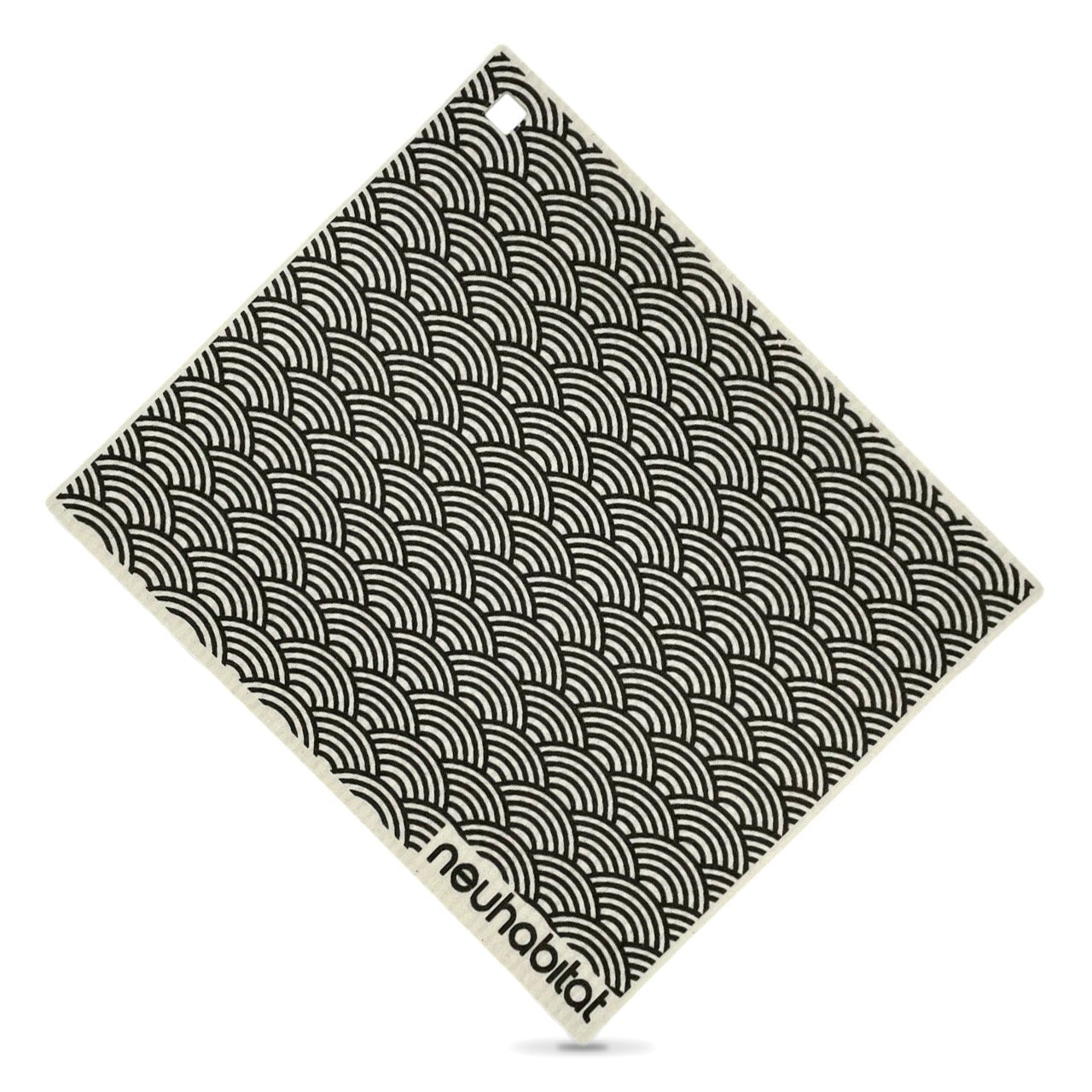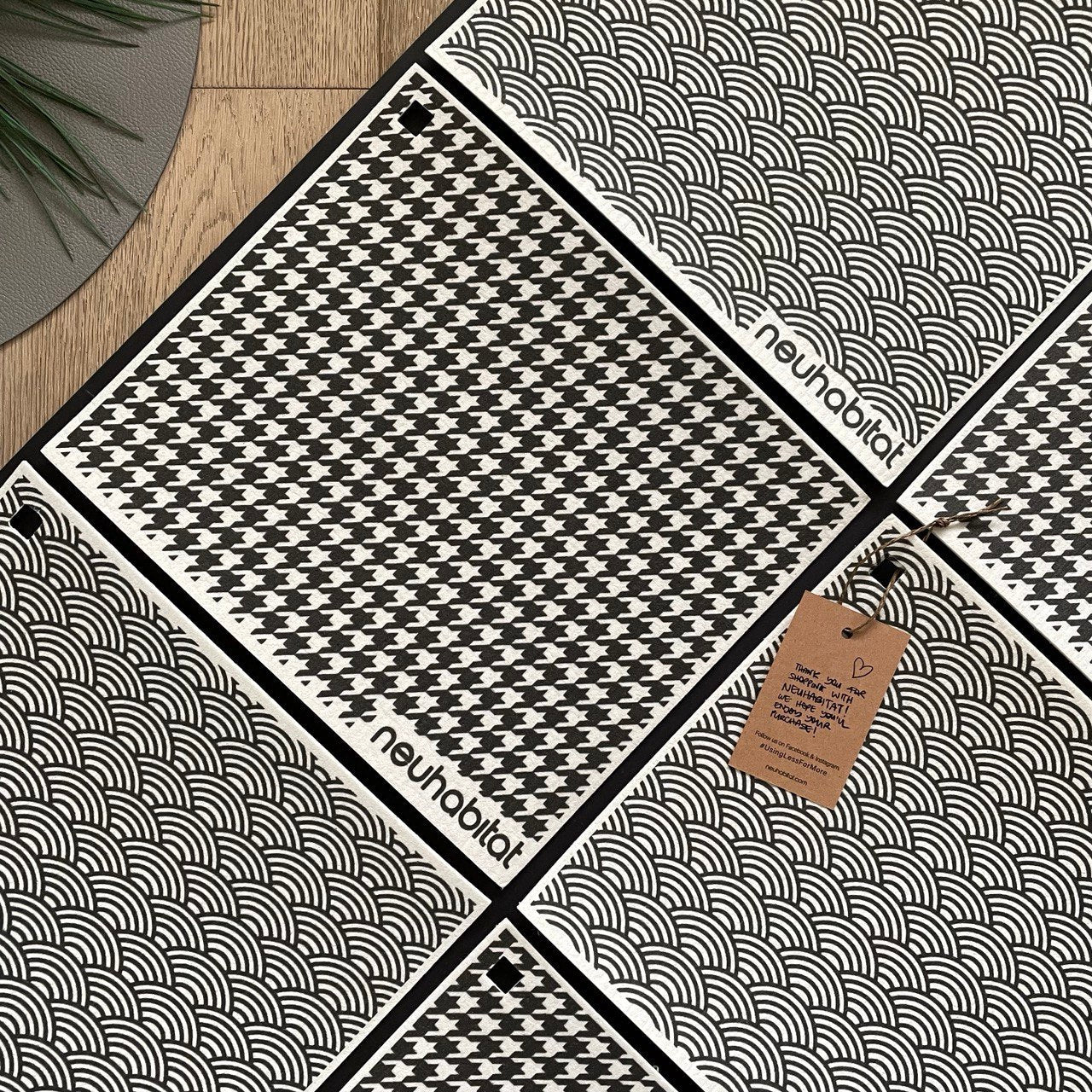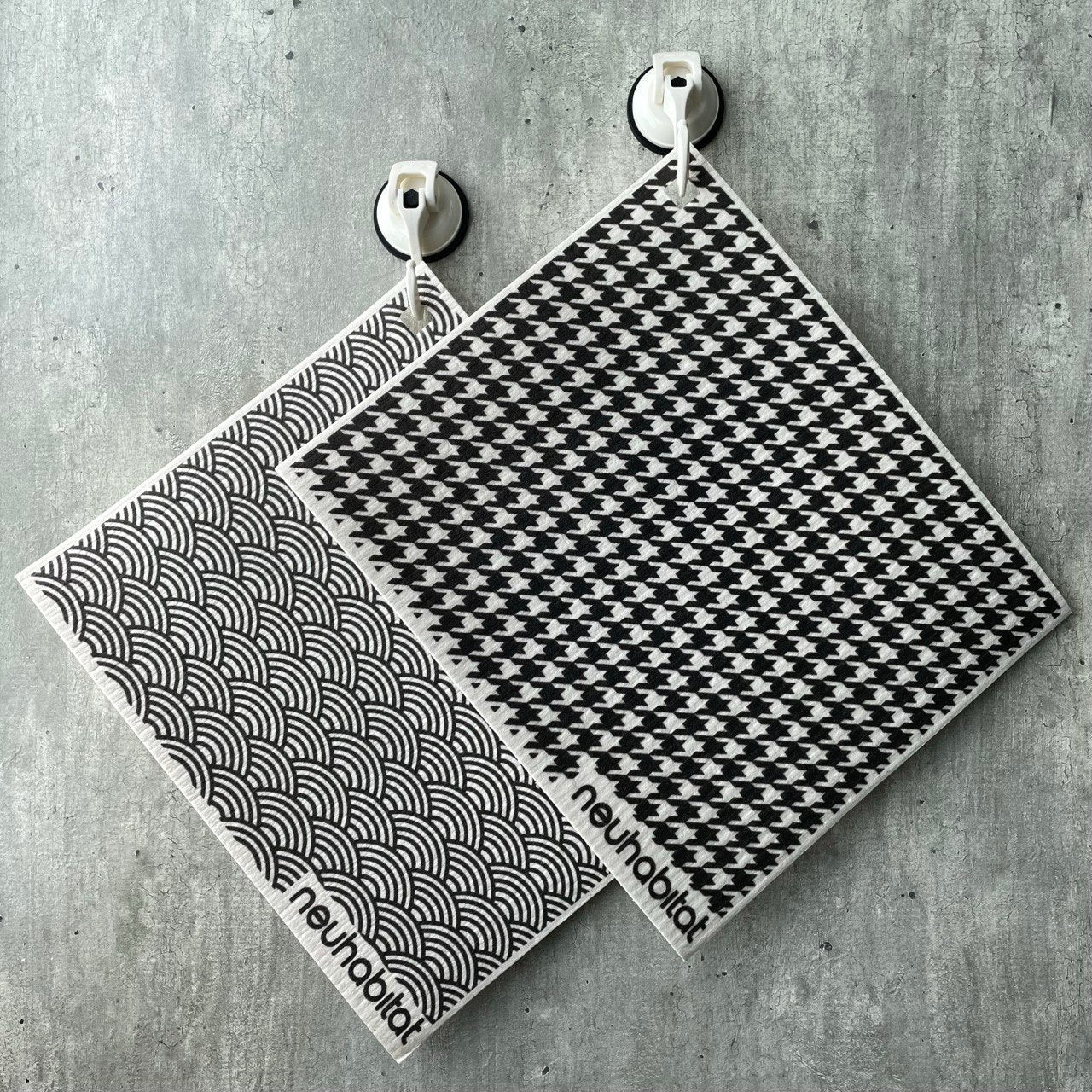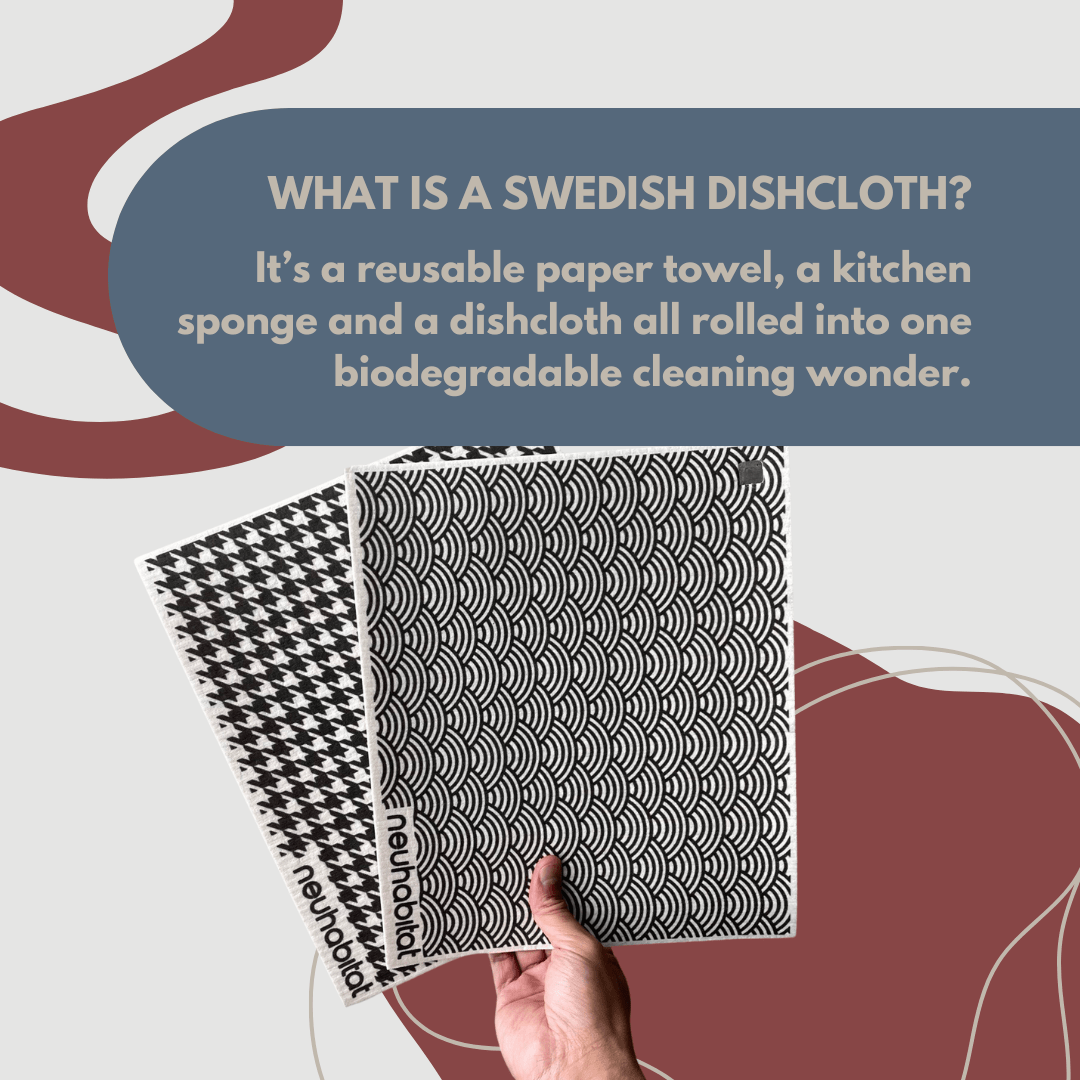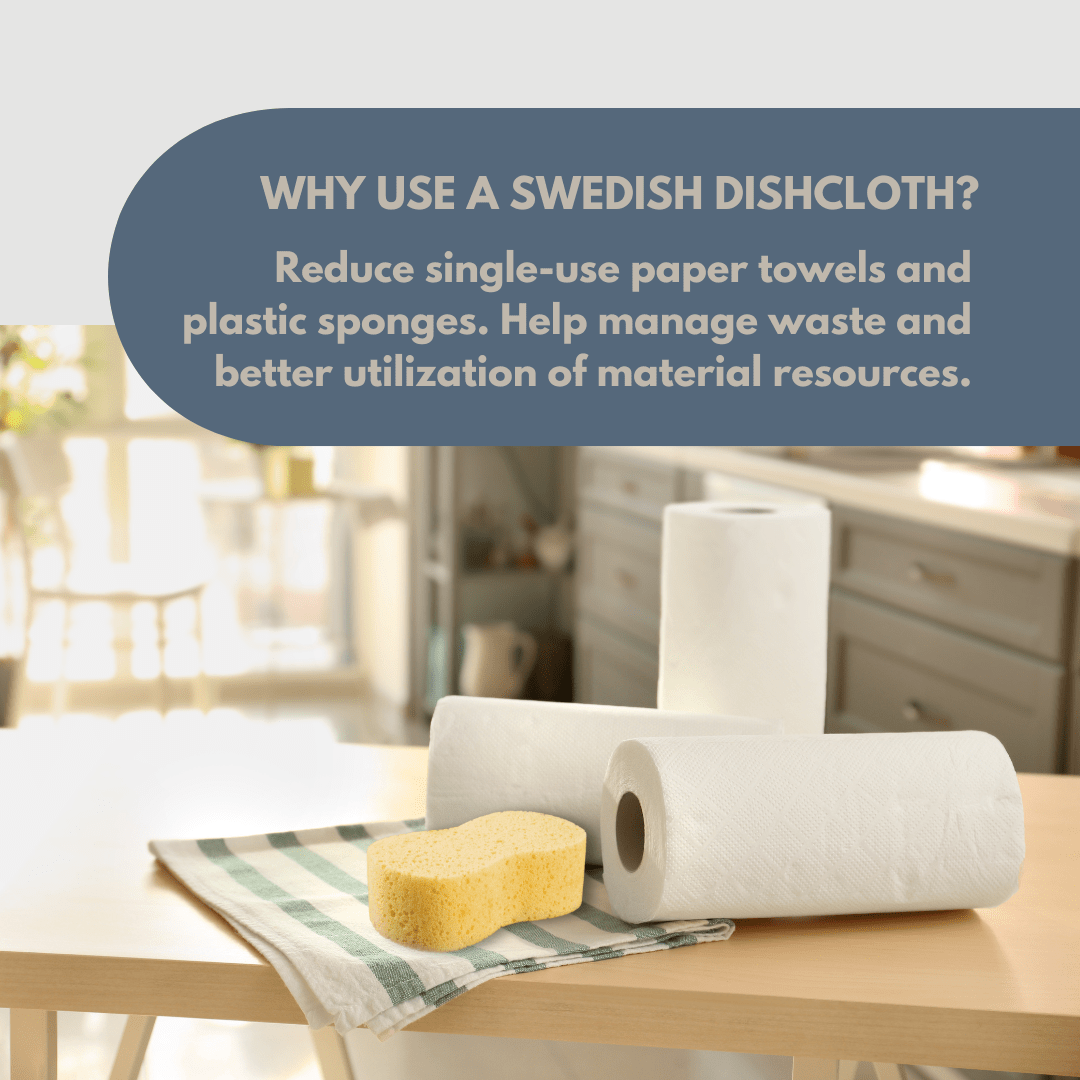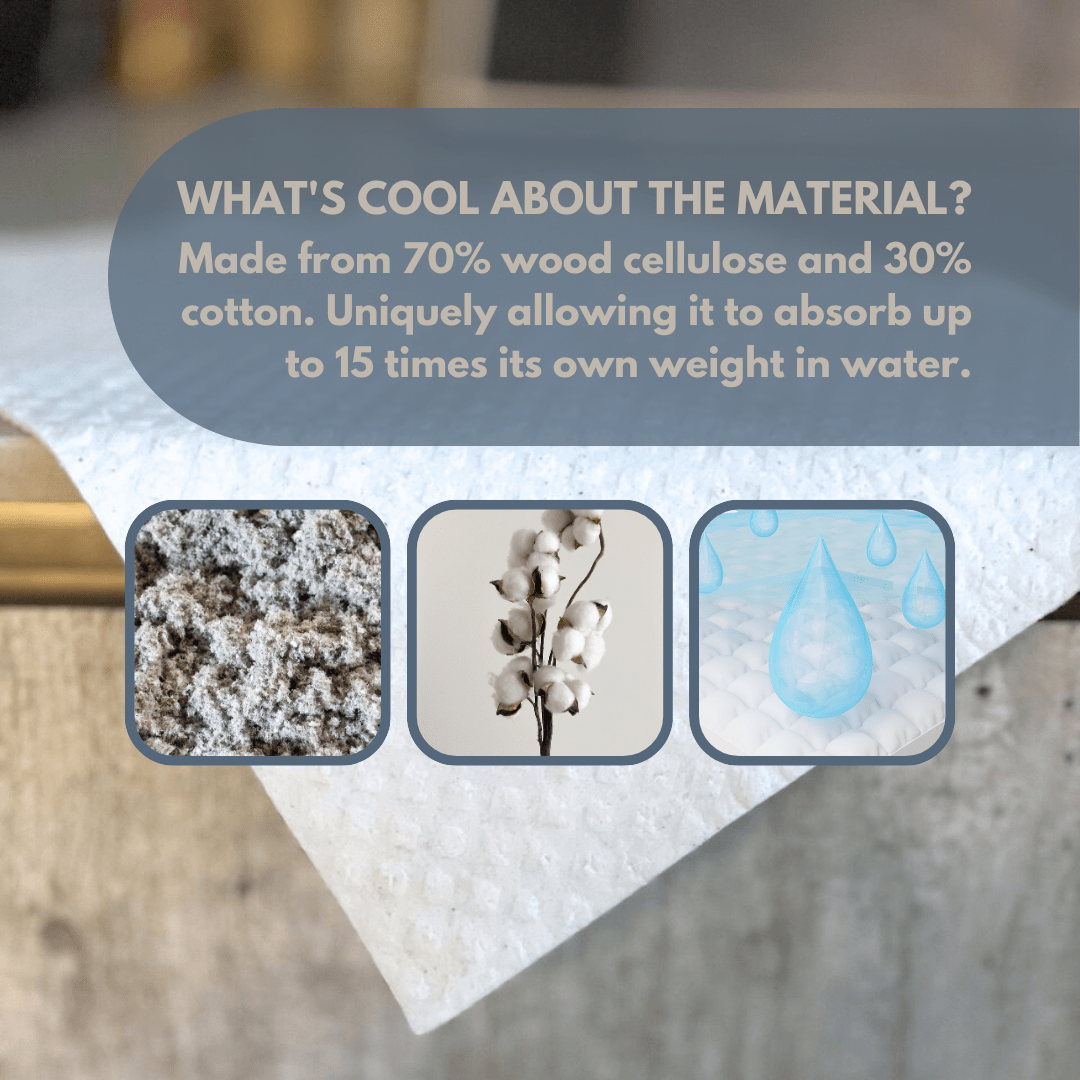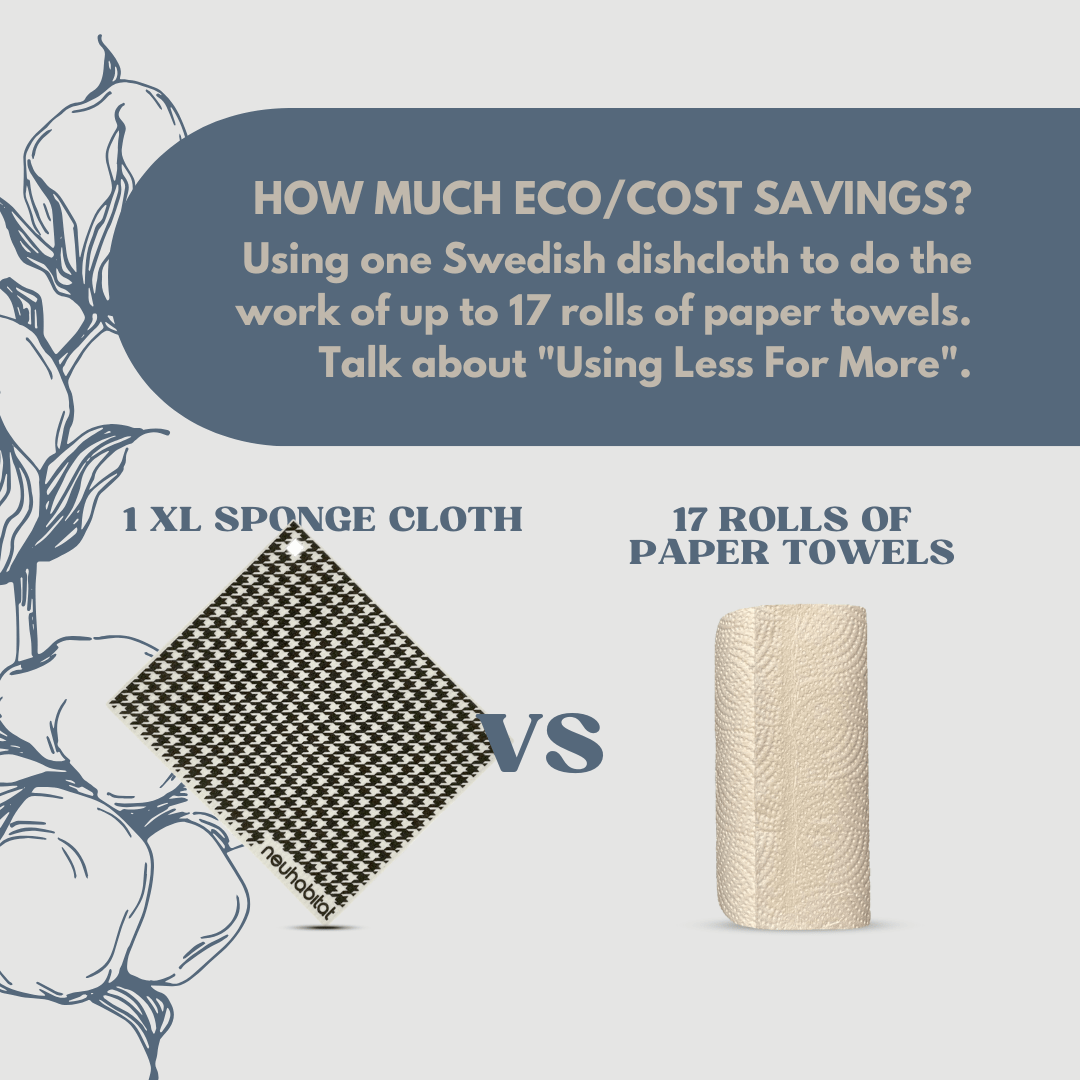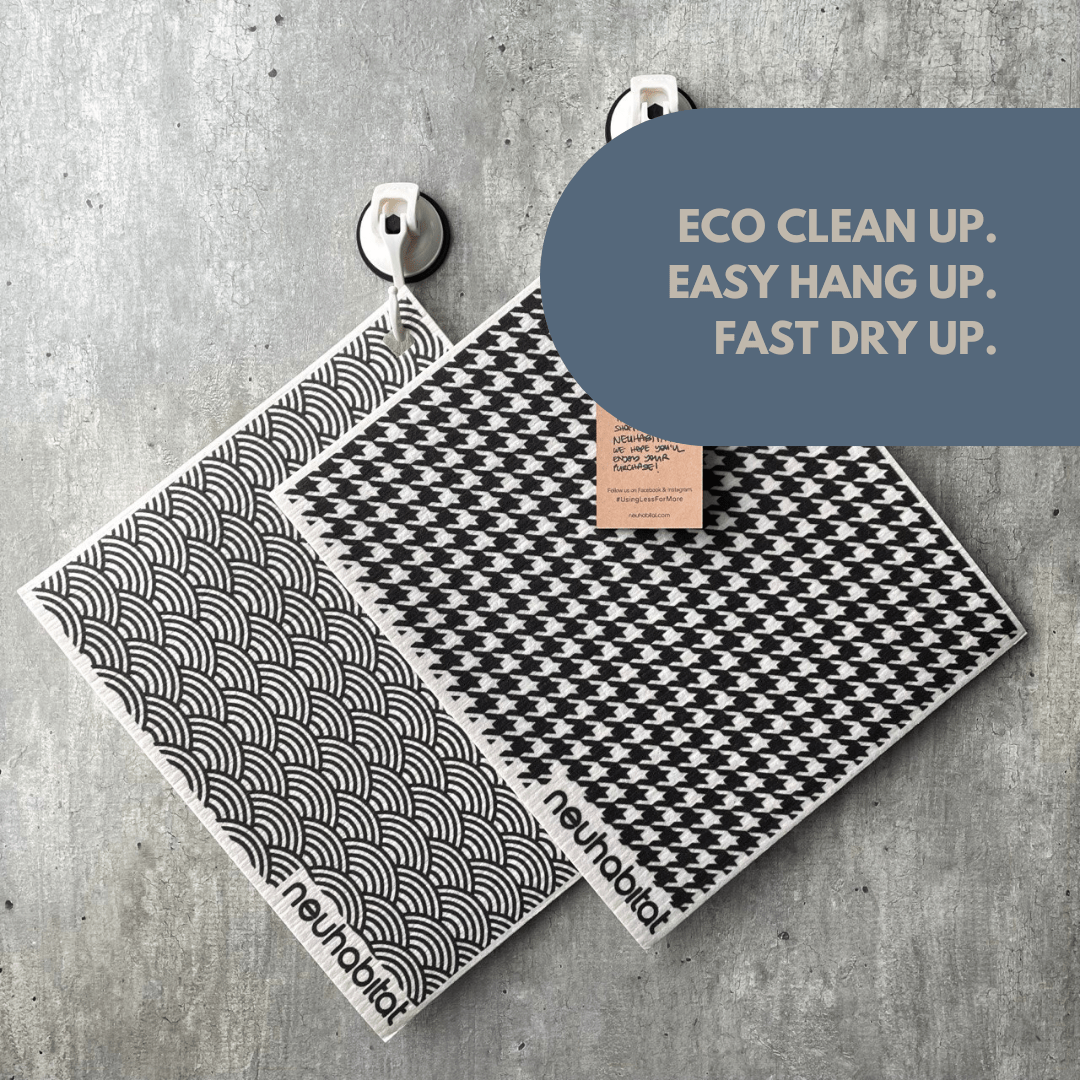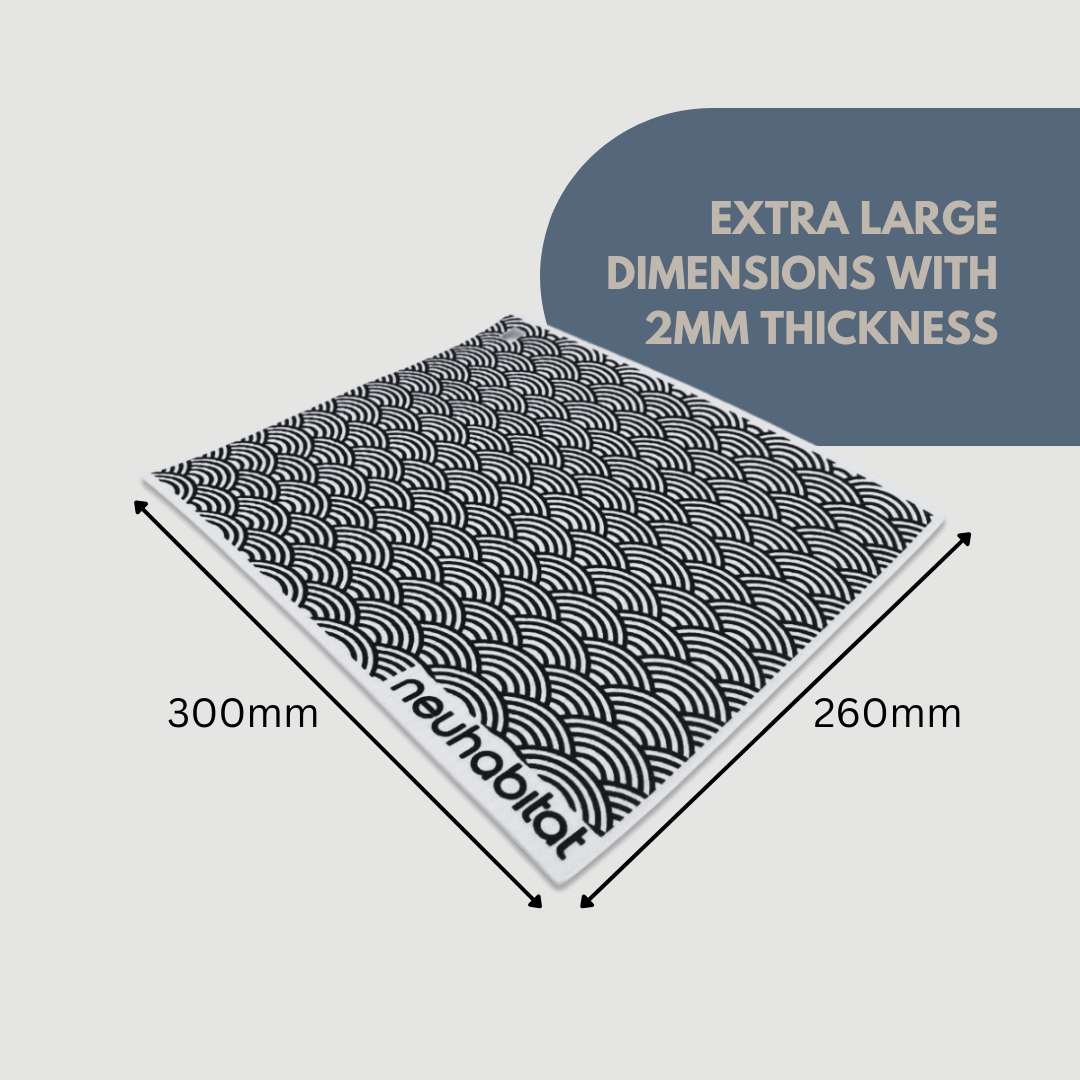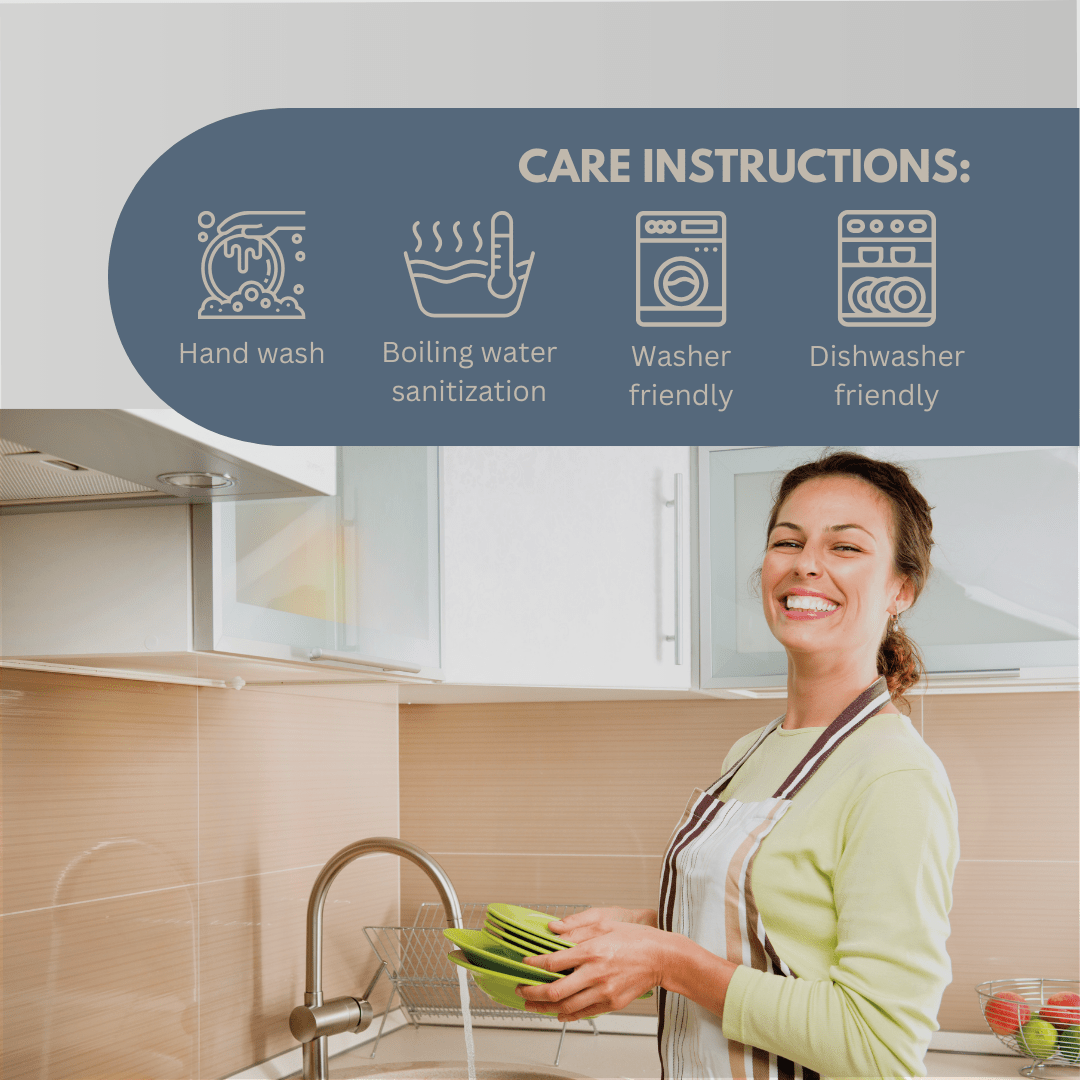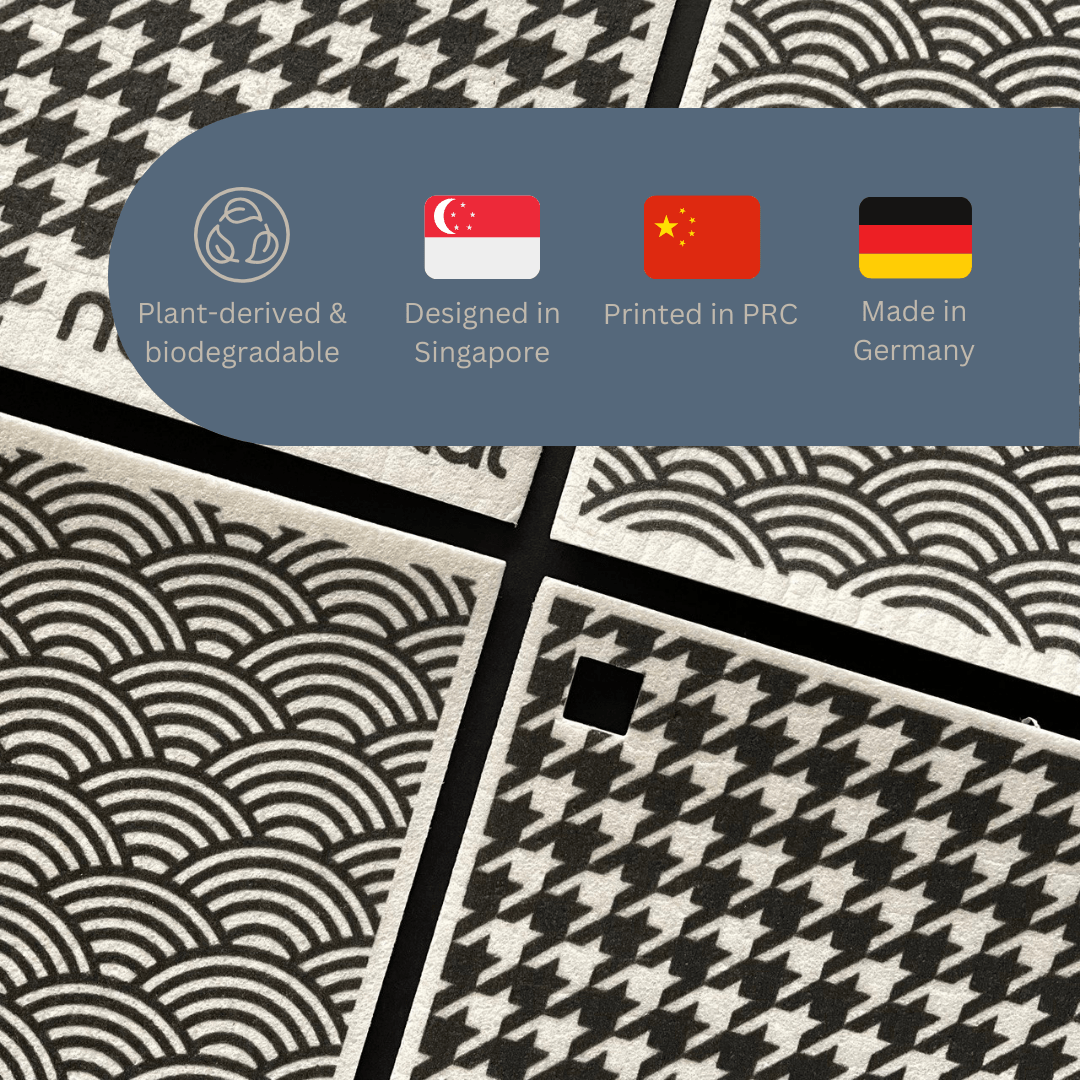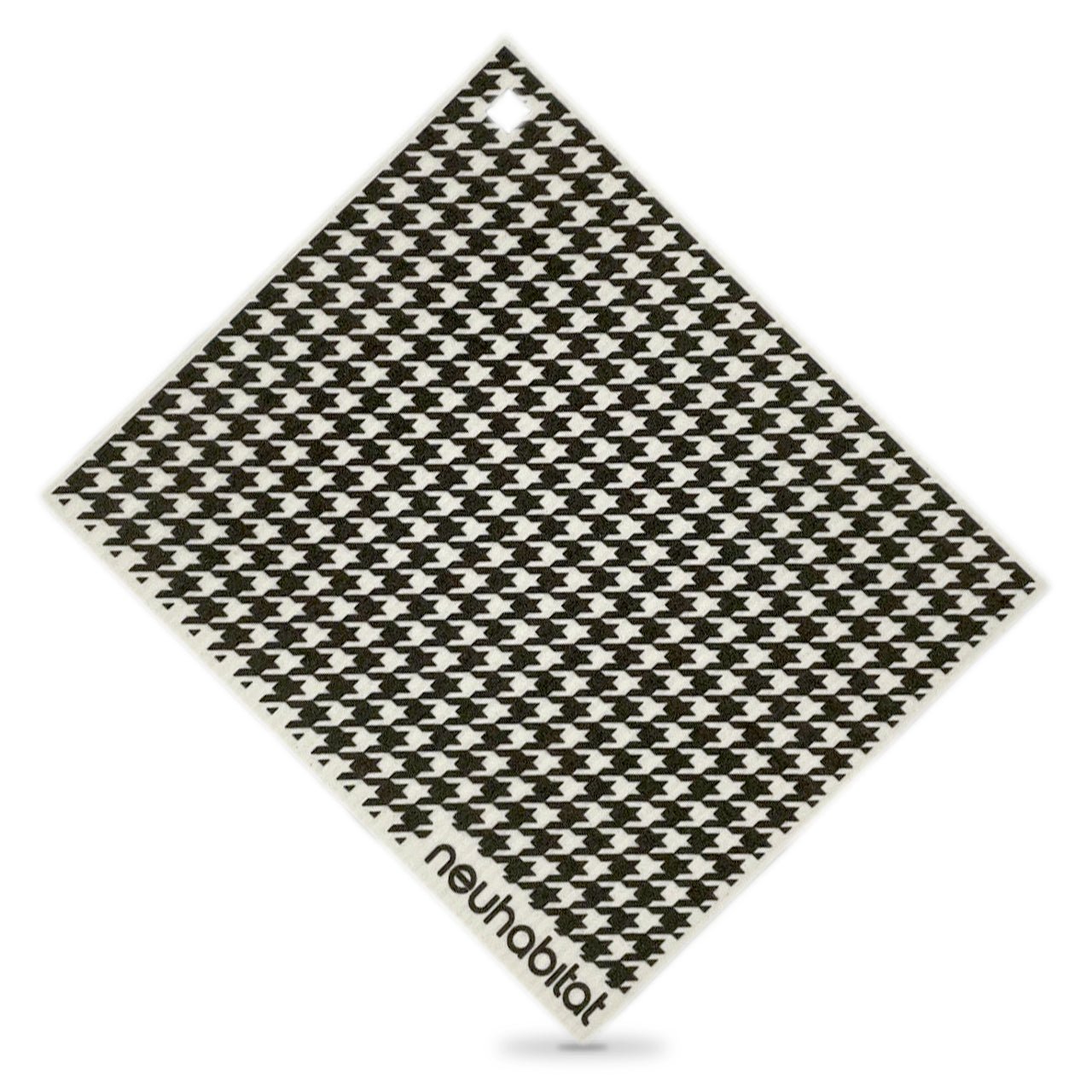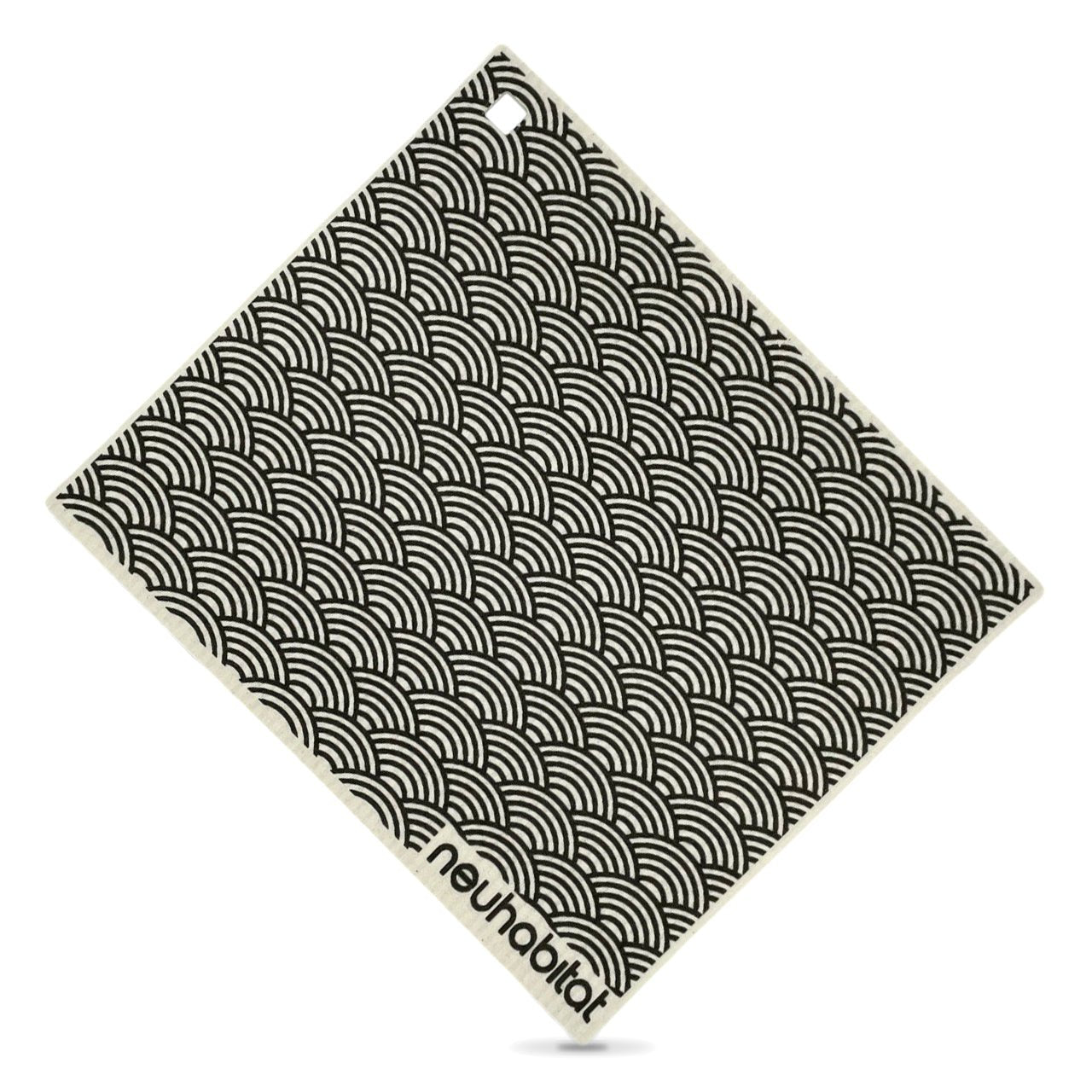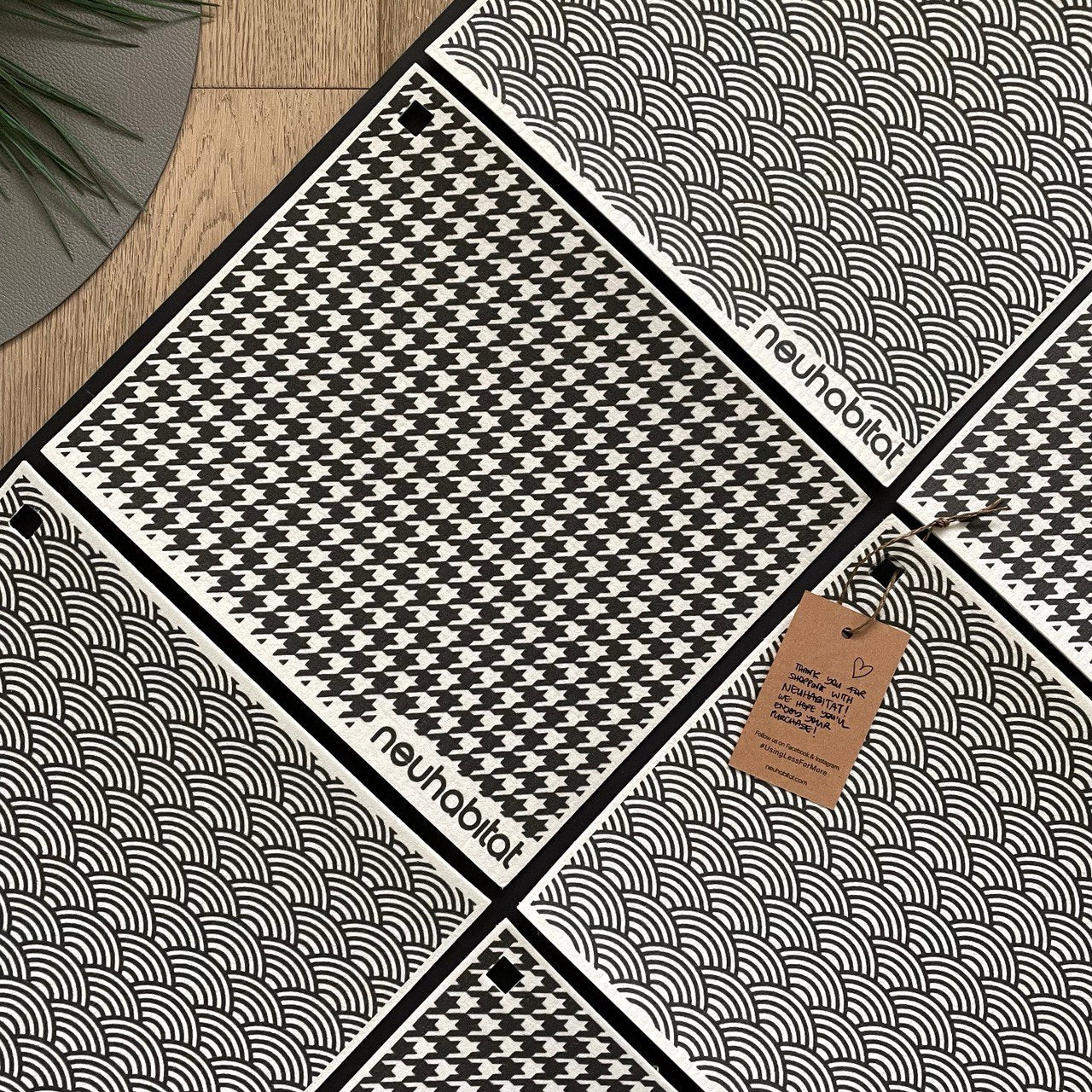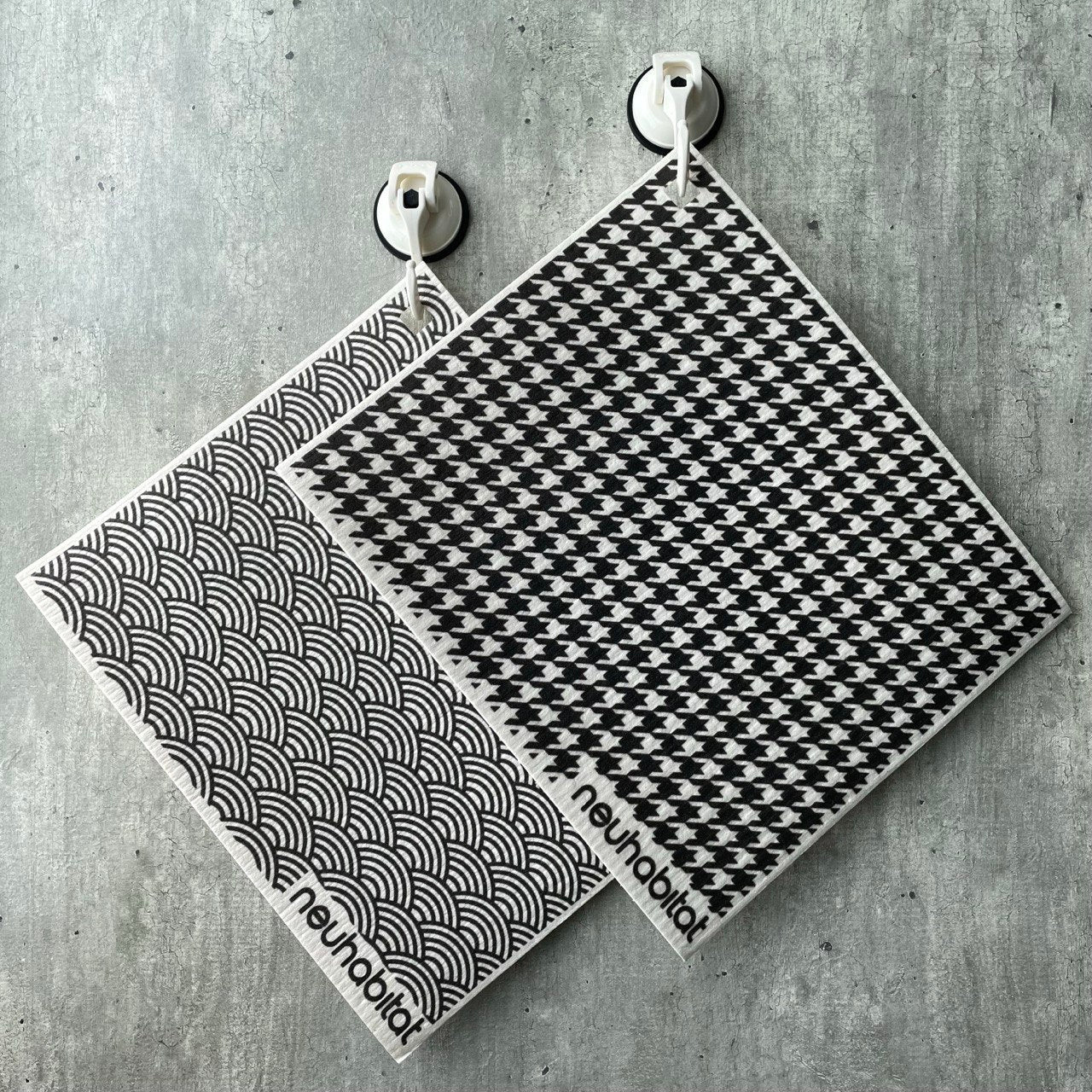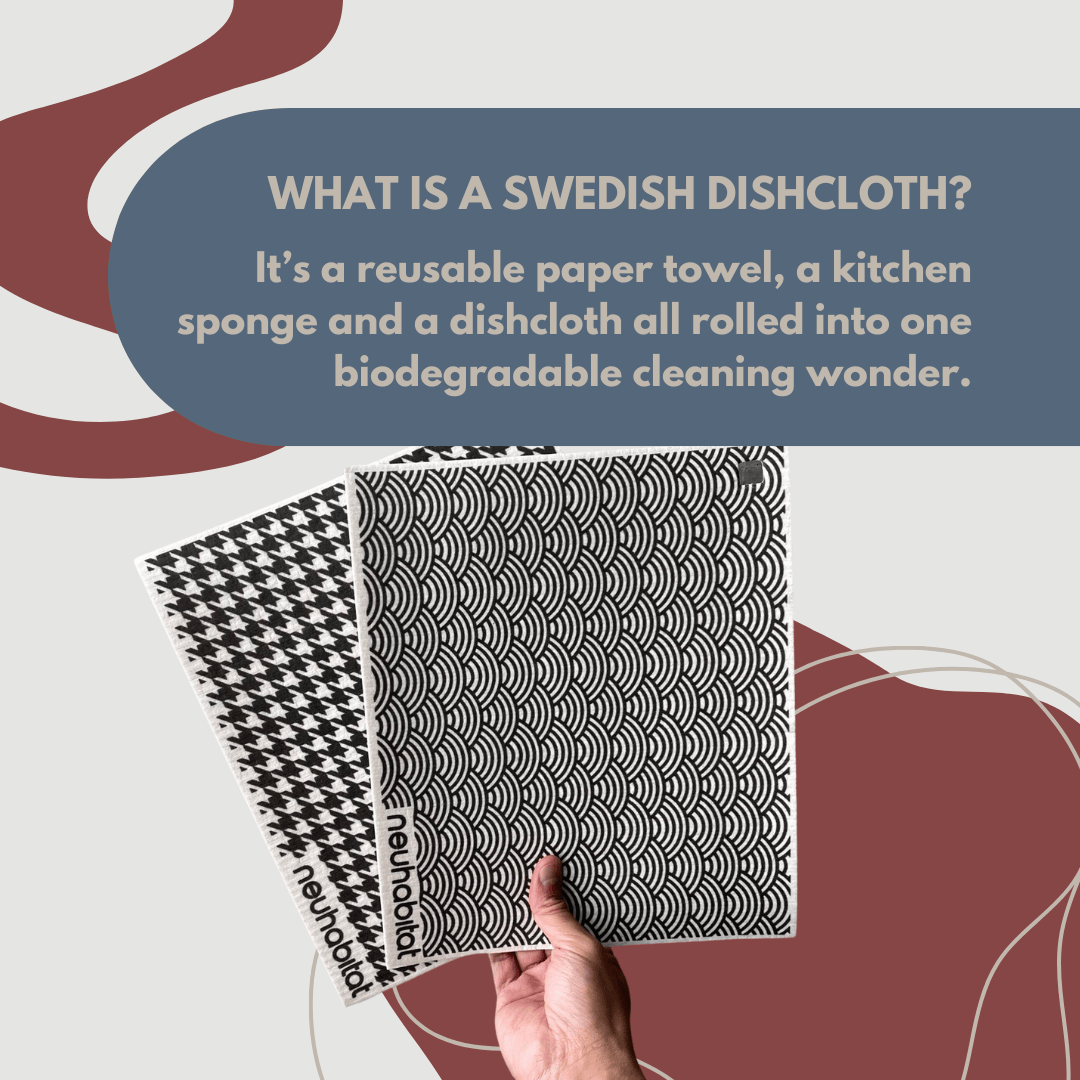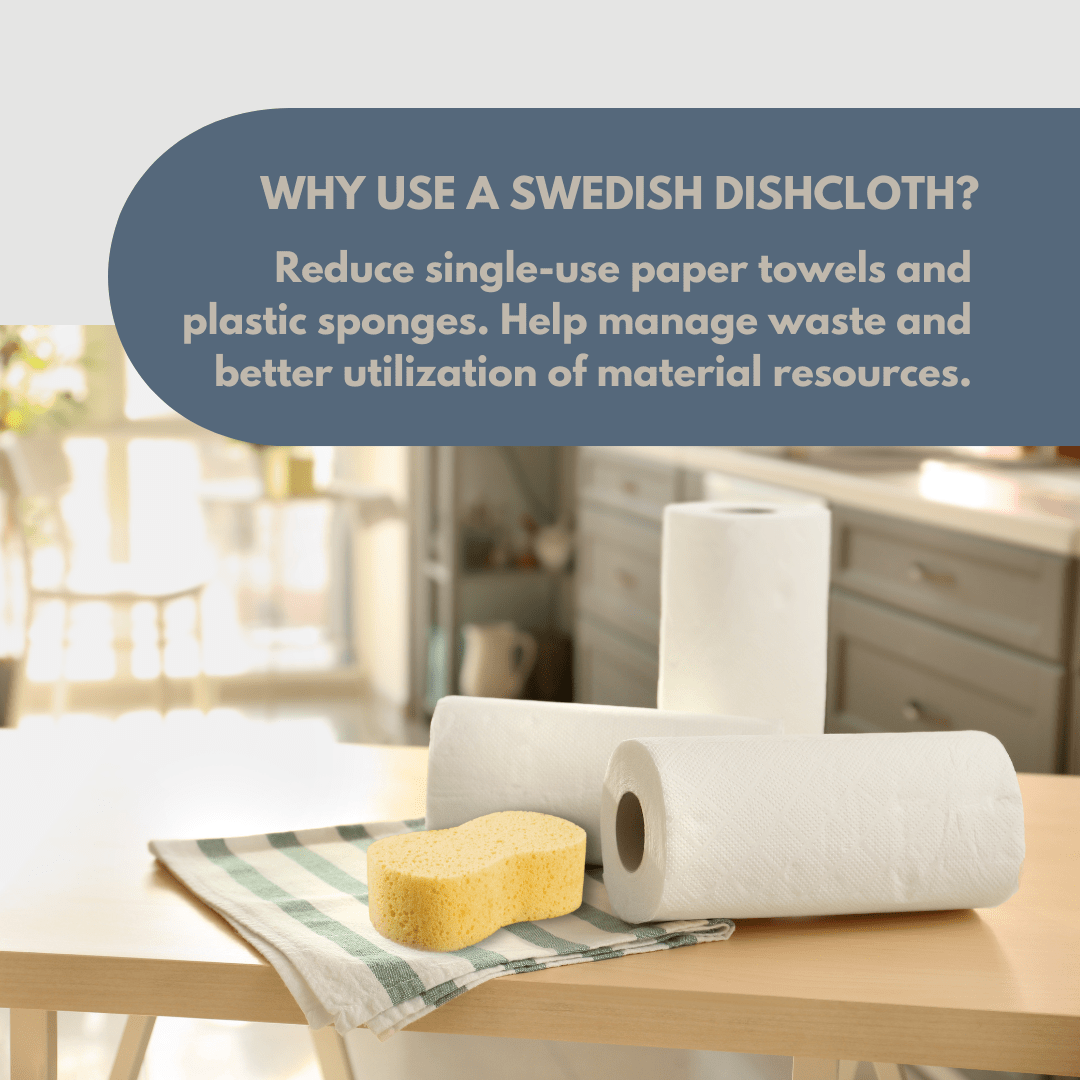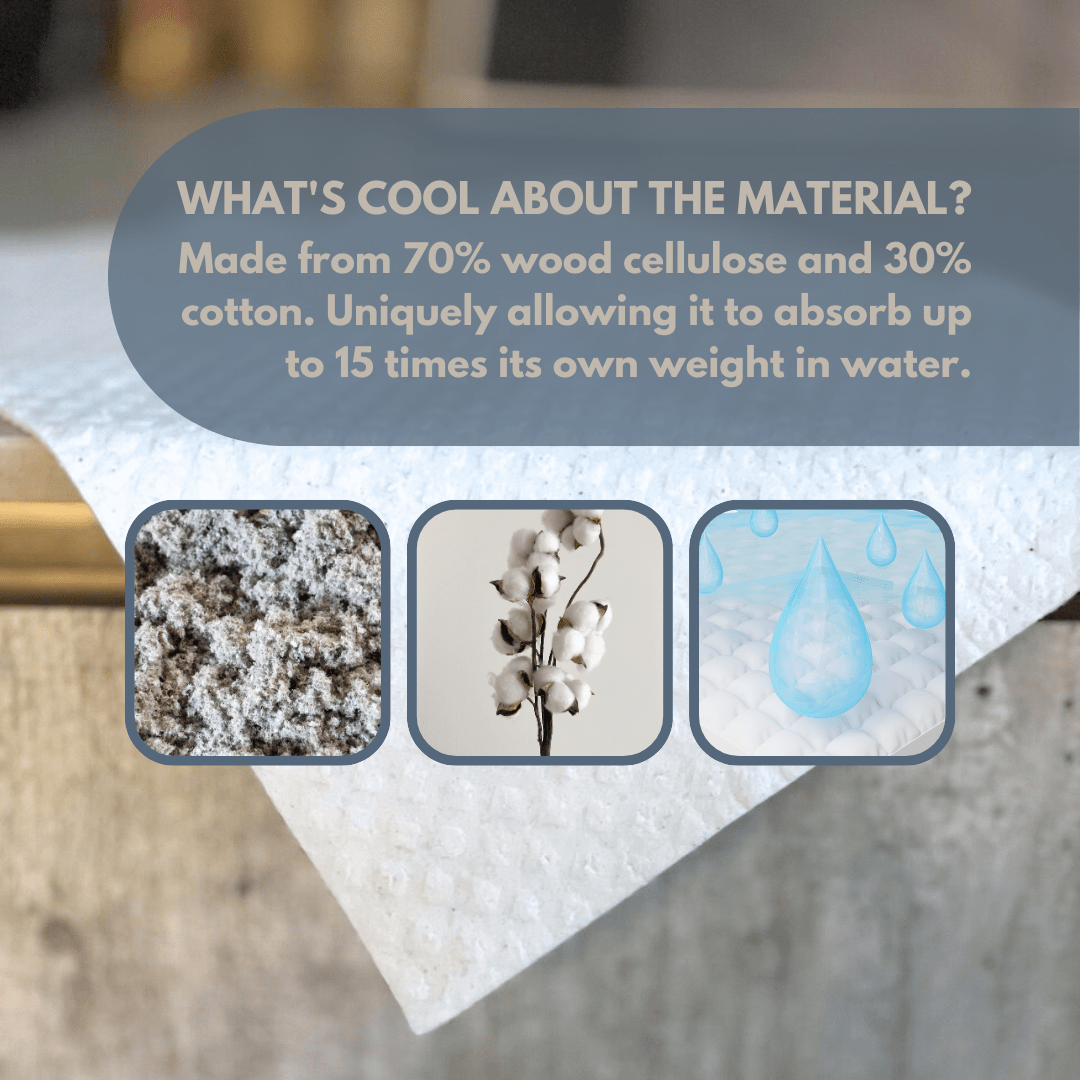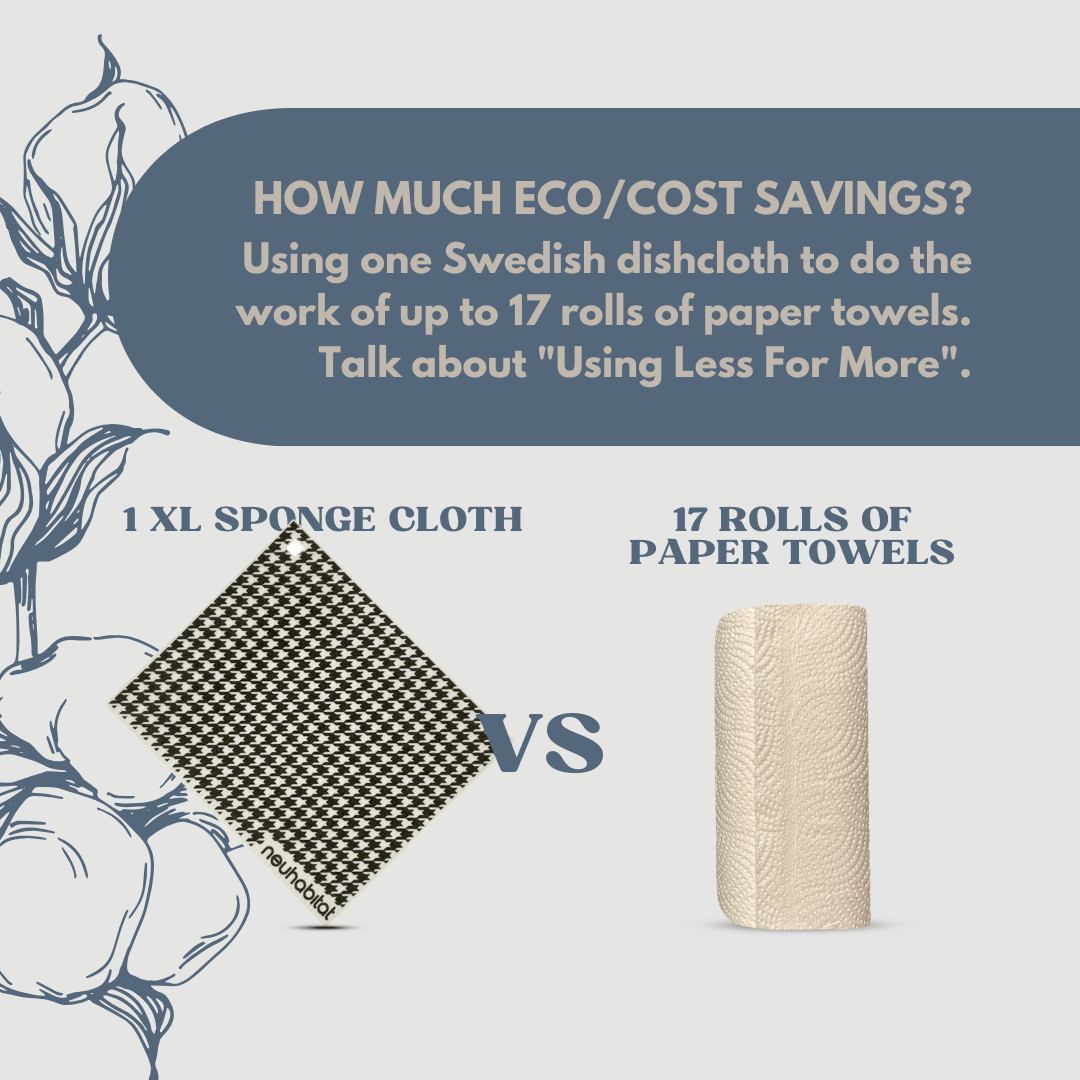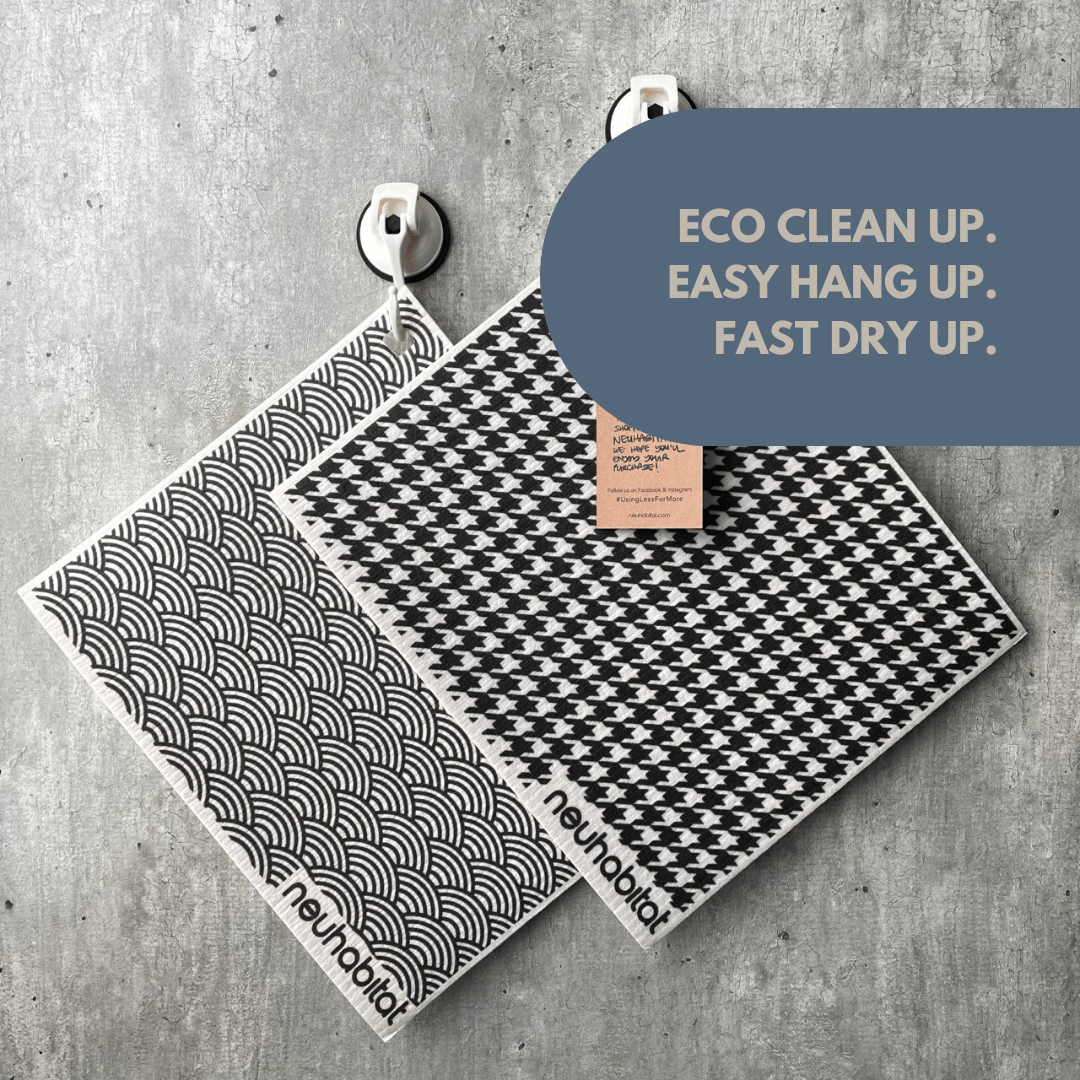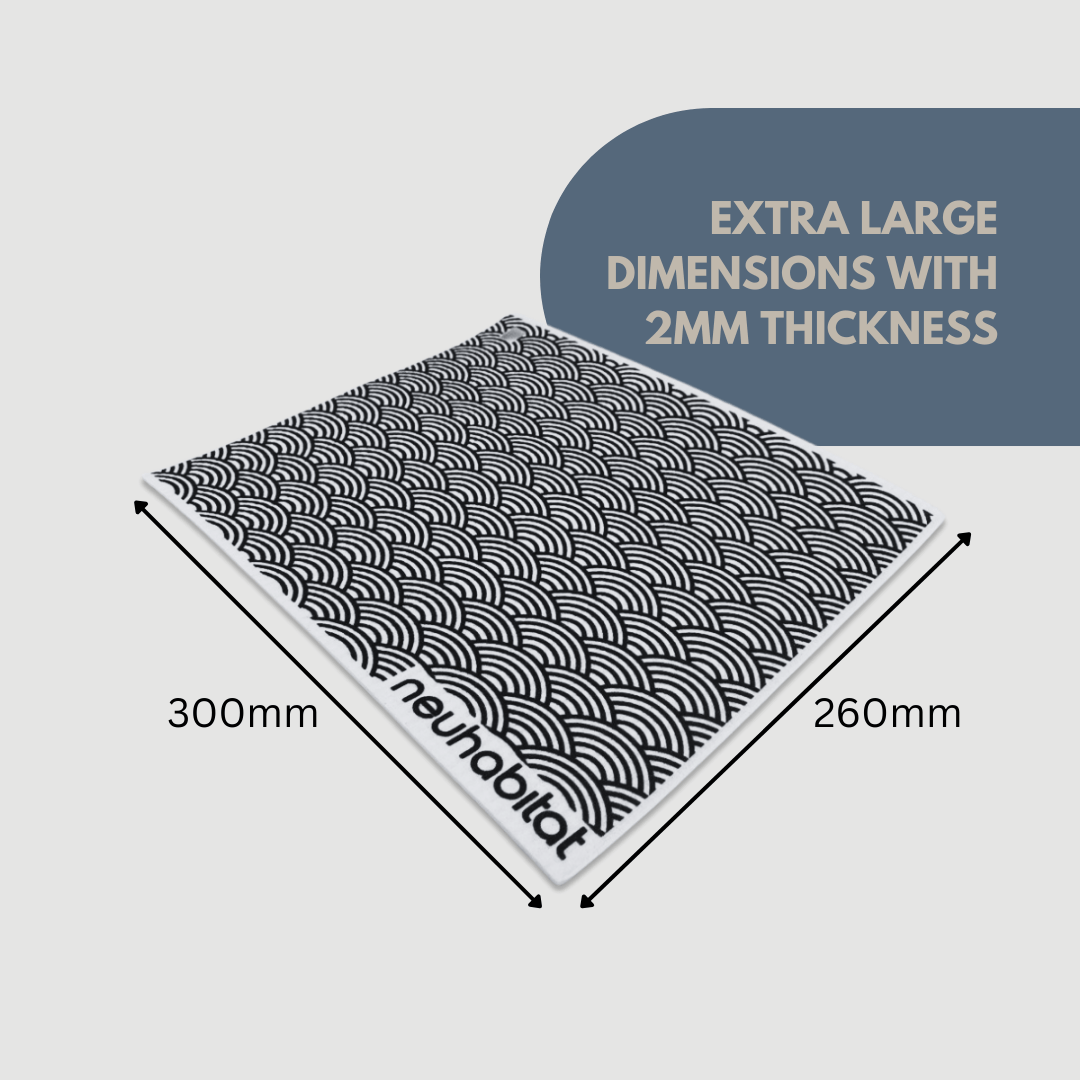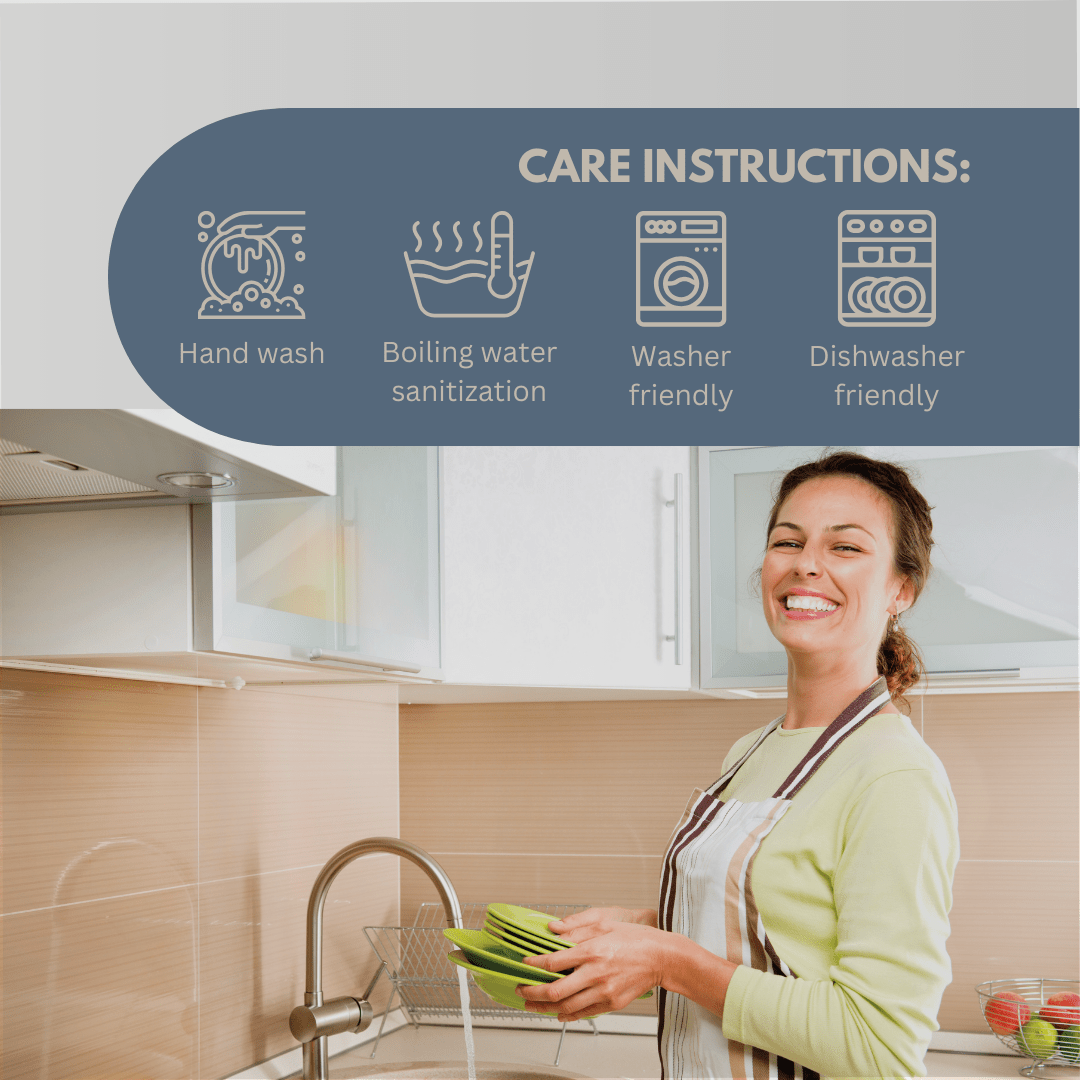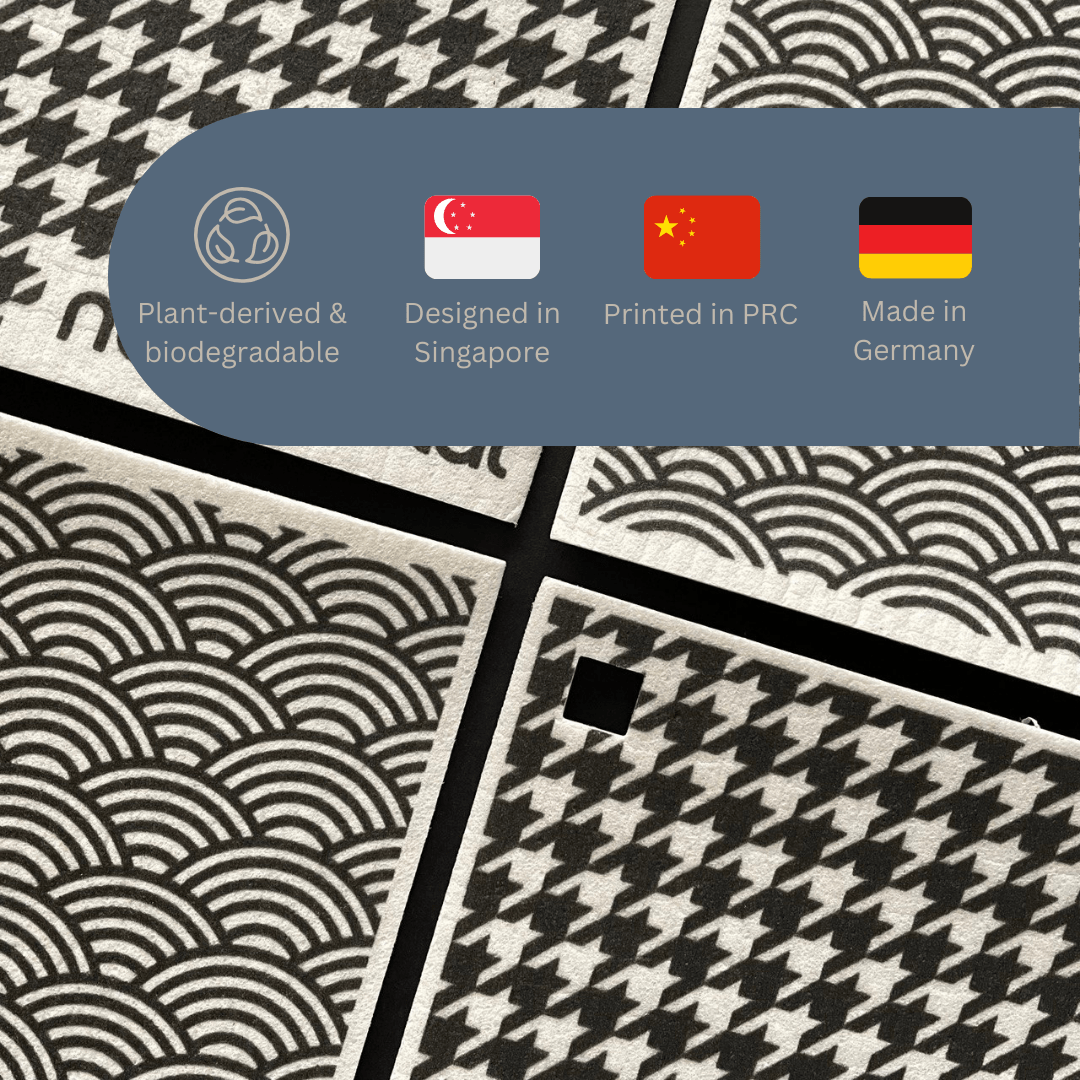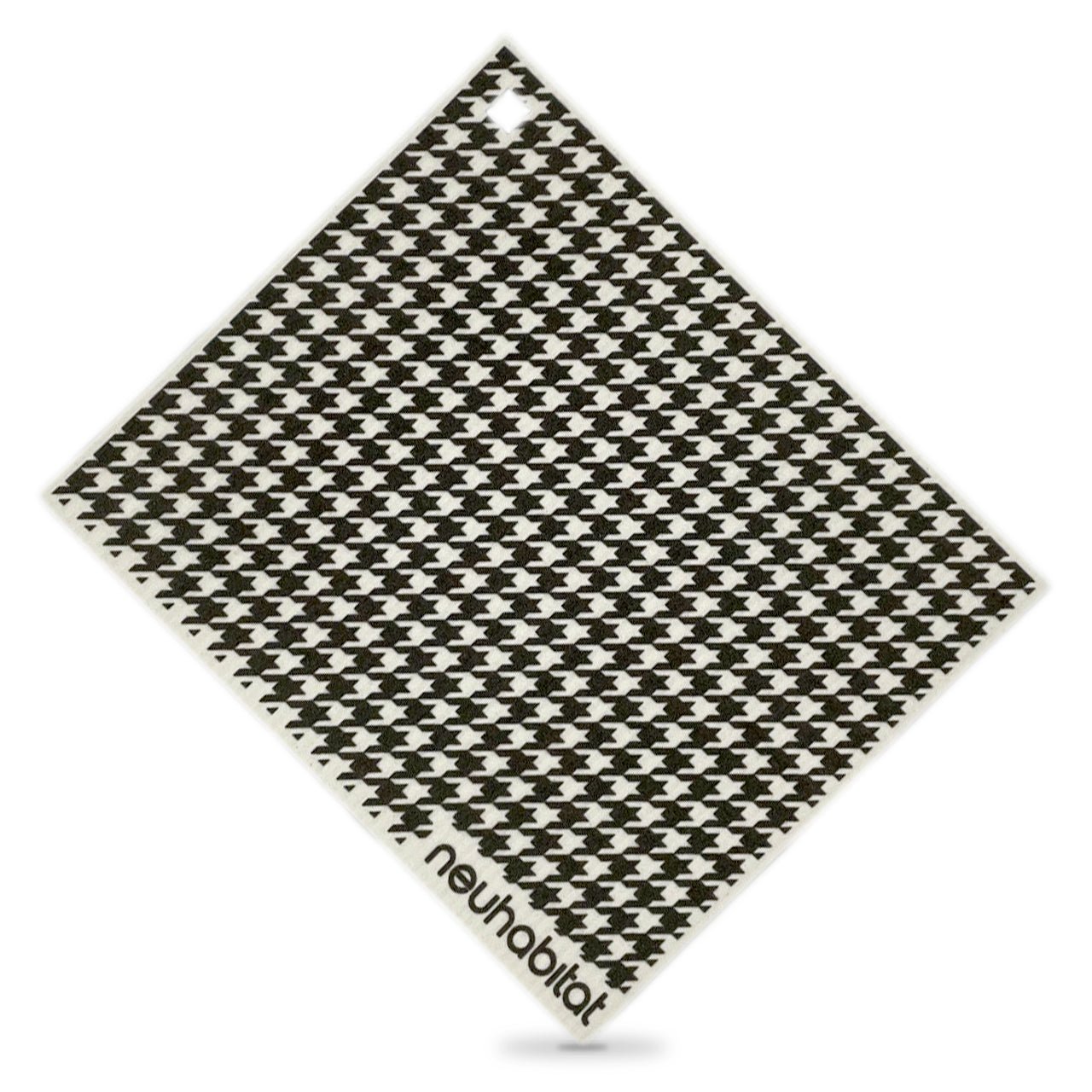Neuhabitat
Extra Large Swedish Dishcloth With Eyelet Earth Friendly Biodegradable Super Absorbent Multi-Purpose Cleaning White Sponge Cloth
Extra Large Swedish Dishcloth With Eyelet Earth Friendly Biodegradable Super Absorbent Multi-Purpose Cleaning White Sponge Cloth
Couldn't load pickup availability
The Swedish dishcloth was invented in 1949 by Swedish engineer Curt Lindquist. He discovered that a mixture of natural wood cellulose and cotton fibers can absorb an incredible 15 times its own weight.
Widely used to replace paper towels and synthetic dishcloths, statistics have shown that almost every home in Sweden stocks this wonderful dishcloths. We know that paper towels are convenient to use, but they’re not eco-friendly. Since they can’t be recycled, about 6 million pounds of paper towels end up in landfills each year. Global paper towel production also requires an estimated 110 million trees and 130 billion gallons of water to produce, it is simply not the way forward.
By the way, it has many names, some may call it "sponge dish cloth" or "cellulose dish cloth", "kitchen sponge cloth", "European dishcloth" or "Swedish sponge", but we just like to call it "sponge cloth". Whatever name it is called, it is an essential cleaning tool for any modern and sustainable home.
Additionally, kitchen sponges made from polyurethane and polyester are generally not recyclable because they contain a large quantity of petroleum-based materials which makes their recycling impossible.
By choosing sustainable alternatives like our sponge cloth, you are helping to solve the plastic crisis and reduce carbon emissions. By replacing your synthetic kitchen sponges and reducing paper towel usage with our plant-based sponge cloths, you not only save money, but also help manage waste and pollution.
These simple, smart, and pretty sponge cloths are made of 70% wood cellulose and 30% recycled cotton fiber. They are like a cross between a paper towel and a sponge, and they can do anything a sponge can do and most of the things a paper towel can do. You can soak up spills, wash and dry the dishes, use them like coasters, and clean most surfaces without leaving any lint behind.
Now with an added corner eyelet, just wash and hang them up on a wall hook to dry after your clean up session. They dry fast and actually hardens thus preventing bacteria build up and unwanted smells.
Sponge cloths are biodegradable and compostable. This means when they reach the end of their life span (usually 9-12 months), if disposed of properly in a recycle bin, it can decompose quickly once it reaches a landfill. In a compost environment, it is capable of disintegrating quickly leaving no toxicity in the soil.
Key Benefits:
• Wash and dry dishes
• Wipe down countertops
• Clean your appliances
• Soak spills and clean messes
• Clean glasses and windows without leaving streaks and lint behind
• Wash car interior and exterior
• Cleans almost any surface
Product Features:
• 1 dishcloth can absorb water 15 times its own weight
• Corner eyelet for easy hanging on wall hook
• Ripple and diamond surface enhances its capability in picking up dirt and dust
• 1 dishcloth = 17 rolls of paper towels
• 70% wood pulp cellulose and 30% recycled cotton
• Compostable and biodegradable
Material:
• Wood pulp cellulose
• Recycled cotton fiber
Product Specifications:
• Material is manufactured in Germany
• Designed in Singapore
• Printed & packed in China
• Size per dishcloth: 300mm x 260mm x 2mm
• Weight: 0.022kg
Package includes:
(a) 02 x Seigaiha pattern XL sponge cloth
User Instructions:
Don't be alarmed when it hardens, it is in its normal state. If there's a spill, simply lay it on top of the spill and soak it up. If you need to wipe stains and dirt, simply dampen and soften it with water, add a little cleaning agent and you are ready to go!
Care instructions:
Washing your XL sponge cloth is easy. You can just rinse it out and let it air dry, or simply toss it into the washing machine or dishwasher. Since they are made of a mix of cellulose and cotton, they will shrink when exposed to high temperatures. Just be sure to turn off the drying cycle.
*Due to light and screen settings on different devices, colour of the product may look slightly different from the picture. All measurements are approximate and may vary slightly.
